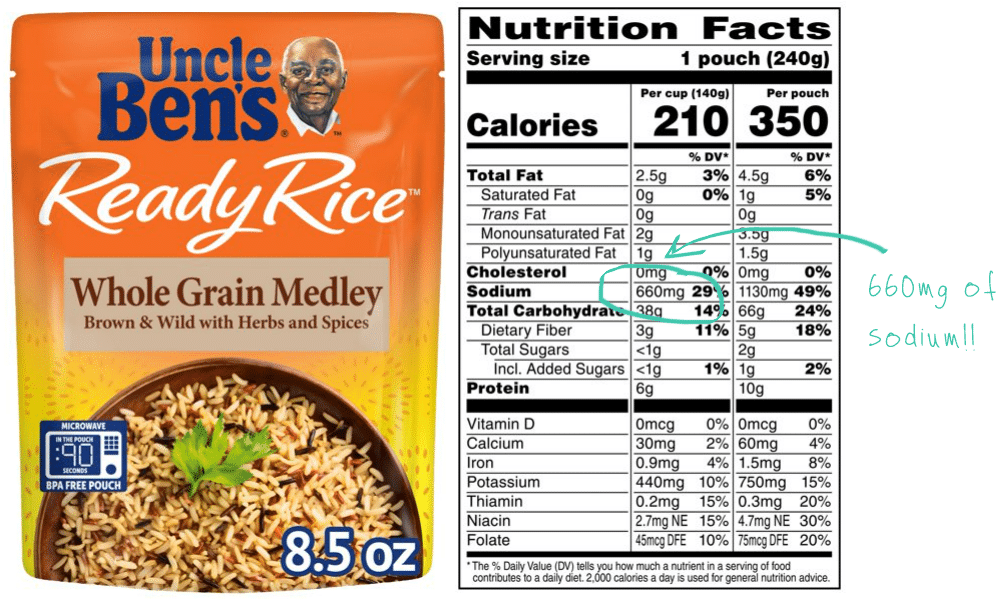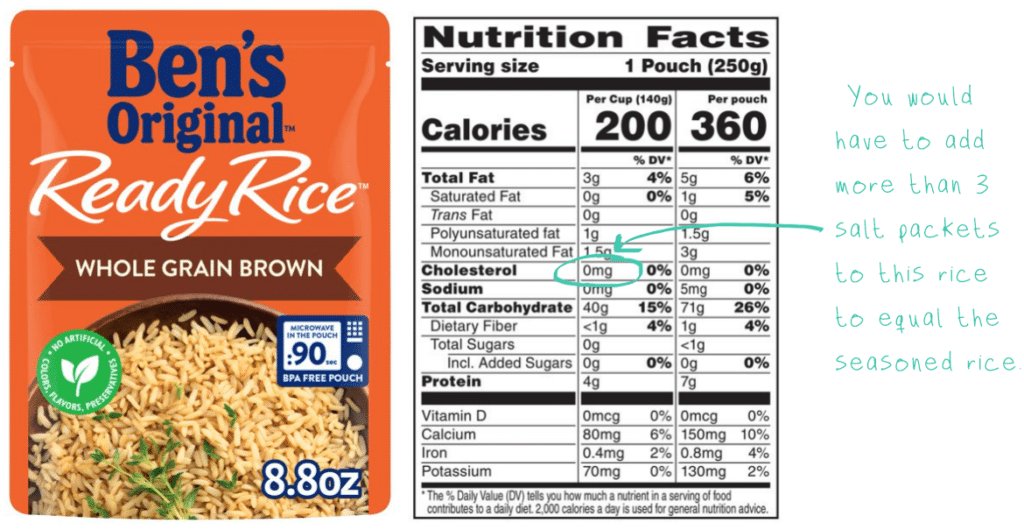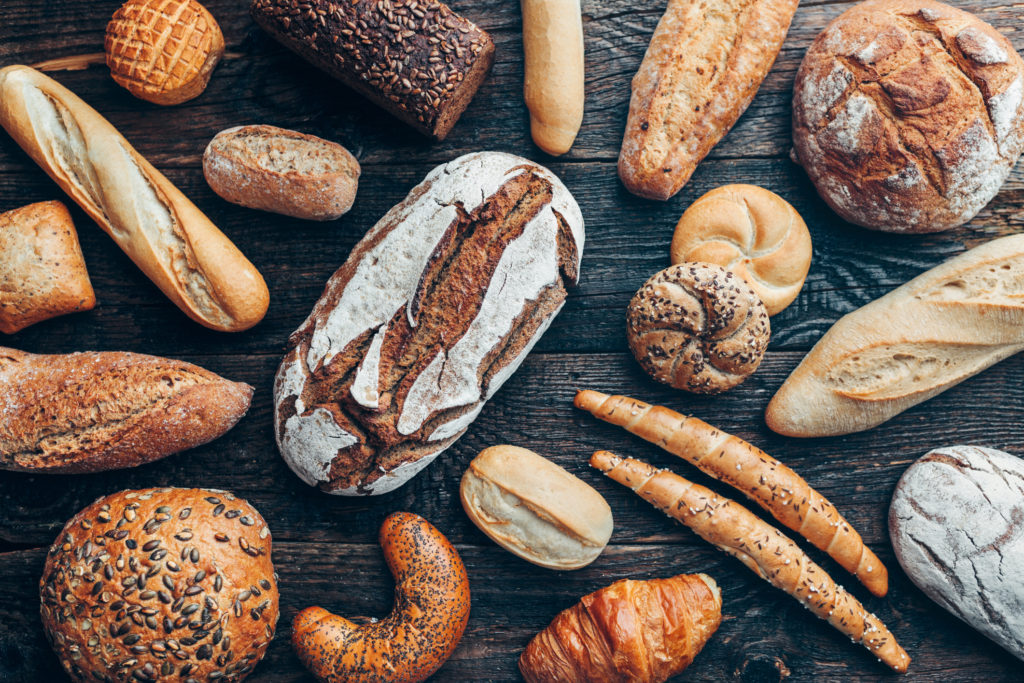We all know that we should be cutting back on how much salt and sodium we eat. And many people brag about how they “never” use a salt shaker. But is that the right strategy?
This post may contain affiliate links through which we may earn a small commission to help keep this website free.
What are the biggest sources of sodium in the American diet?

Research shows that only 5% of our daily salt/sodium intake comes from salt added at the table. If you’re consuming 3,500mg a day (which is, sadly, very common in the typical American diet), 5% is only 175mg. If you cut out salt at the table, you’re still eating 3,325mg of sodium!!
The best way to reduce your sodium intake is by reducing the amount of food you eat that was prepared away from home (restaurant, convenience food, frozen meals, most packaged foods at the grocery store, etc) and increasing the amount of food you eat that is prepared or cooked at home. If the average person consumes 3,500mg of sodium per day, then almost 2,485mg of that sodium is coming from foods prepared outside of the home. That’s a lot of sodium that can be saved by preparing food at home where you have control over how much salt goes into your food.
Is it better to add salt during cooking or at the table?
Many people think that you will use less salt if you add it during cooking, rather than at the table. I remember having this conversation with a group of dietitians and a lot of them thought that this was the case. However, it is actually not true.
When you add salt during the cooking process, it gets absorbed into the food and spread evenly throughout the food. You can add A LOT of salt during the cooking process, but when you take a bite of the final product, it won’t necessarily taste too salty because the salt is even spread throughout the food.
If you don’t add the salt during the cooking process and instead add it at the table, the same amount of salt will make your food taste unbearably salty. Why? Because adding it at the table keeps the salt at the surface of the food. This is the part of the food that actually hits your tastes buds, so you’ll perceive the food to be saltier – even though it has the same amount of salt!
For example, this microwaveable pouch of seasoned rice contains 660mg of sodium per serving (15% of your daily sodium!!).

What if you bought the plain rice and added salt to it?

In case you don’t know what 660mg of sodium looks like, it is 3.4 salt packets (you know the little packets of salt that you can get as restaurants). For simplicity, just imagine putting 3 salt packets on one serving of rice. That’s a lot of salt, and the rice would probably taste REALLY salt. You could probably get away with only using one packet of salt and still find the taste to be appealing.
Researchers have actually tested this theory and found that the participants were able to drop their daily sodium intake from 3,100mg per today to 1,900mg per day just by omitting the salt during cooking and adding what they wanted at the table. Pretty amazing huh?


